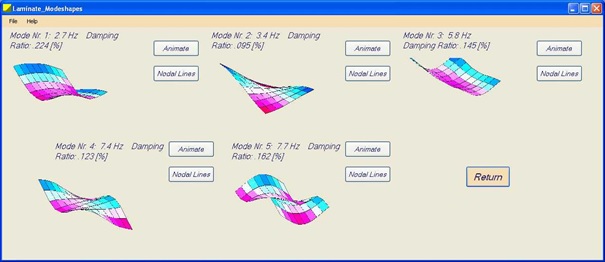Introduction
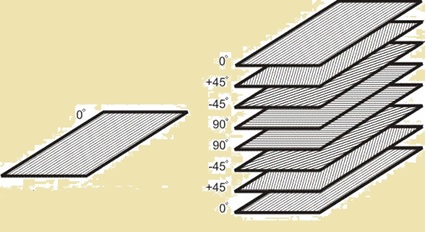 Structural parts made in composite materials are mostly using laminates. A laminate consists of a stacking sequence of layers called “lamina”. Lamina can have orthotropic properties (Uni-directional reinforced plastics, textile reinforced plastics, … ) or isotropic properties (random distributed short fibers, foams, … ). Each layer can be made of a different material and can have a different thickness and material orientation. The stiffness and damping properties of laminates can be computed if the stiffness and damping properties of each layer are known. These layer properties can be measured with the Resonalyser equipment on test beams and test plates. The measured properties can be stored in a material database. The laminate analysis program of the Resonalyser allows computing the stiffness and damping properties of laminates and allows also prediction of resonance frequencies, damping ratios and modal shapes of laminated plates with arbitrary sizes.
Structural parts made in composite materials are mostly using laminates. A laminate consists of a stacking sequence of layers called “lamina”. Lamina can have orthotropic properties (Uni-directional reinforced plastics, textile reinforced plastics, … ) or isotropic properties (random distributed short fibers, foams, … ). Each layer can be made of a different material and can have a different thickness and material orientation. The stiffness and damping properties of laminates can be computed if the stiffness and damping properties of each layer are known. These layer properties can be measured with the Resonalyser equipment on test beams and test plates. The measured properties can be stored in a material database. The laminate analysis program of the Resonalyser allows computing the stiffness and damping properties of laminates and allows also prediction of resonance frequencies, damping ratios and modal shapes of laminated plates with arbitrary sizes.
The laminate analysis program of the Resonalyser
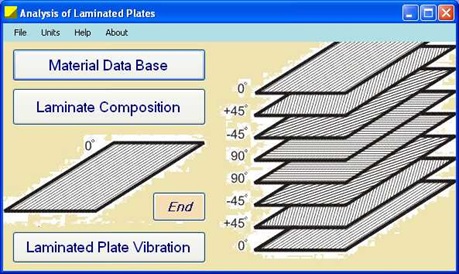
The laminate analysis program of the Resonalyser can execute 3 tasks:
- Building the material database by storing layer (lamina) properties
- Computation of the stiffness and damping properties of arbitrary laminates
- Computation of the Resonance frequencies, modal shapes and damping ratios of laminated plates with arbitrary sizes.
Material database
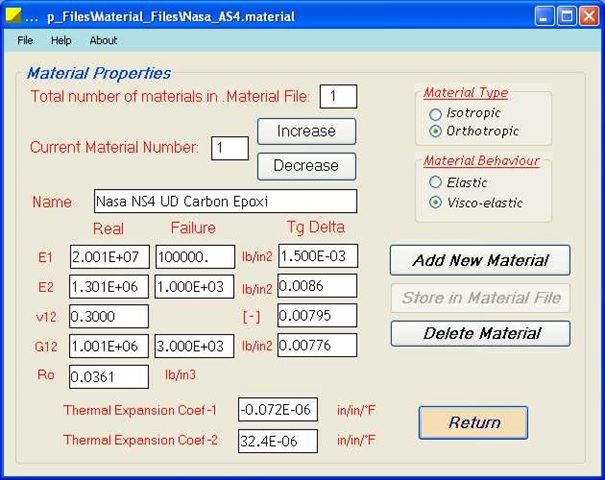
The material database can store several mechanical properties of composite materials. The elastic part of the Engineering constants (Orthotropic E1, E2, v12 and G12, isotropic E, v) and the specific mass Ro are mandatory. Optionally also the tangents delta (damping) in case of visco-elastic material behavior can be stored. Both elastic and damping properties can be measured with the Resonalyser equipment on test beams and test plates. Additionally failure and thermal expansion coefficients can be stored. The user can choose between IS (MKS International standard) or US (imperial standard) for the dimensions.
Laminate composition and analysis
The number of layers and the material (selected from the program database) as well as the thickness and orientation can be chosen.
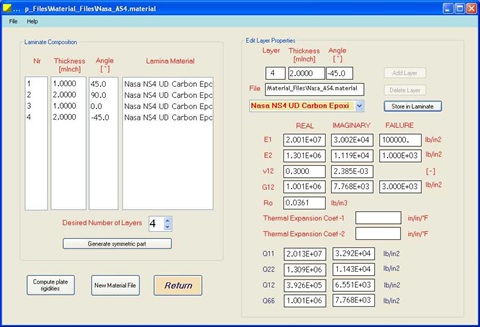
The above example shows a composition with 4 layers (US dimensions)
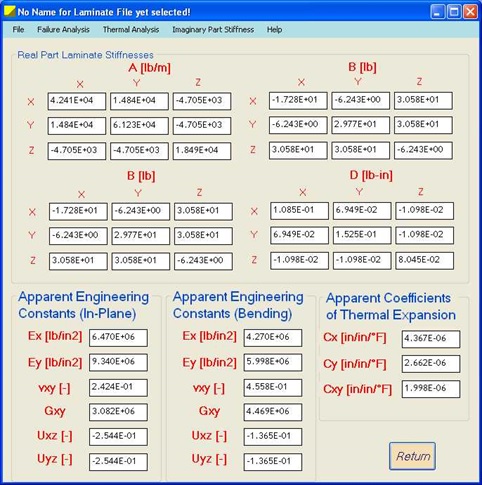
The ABD matrices and apparent Engineering constants are computed.
For visco-elastic materials, also the imaginary part of the ABD matrices can be computed.
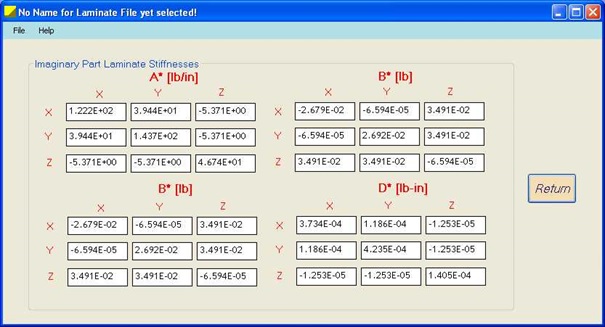 Optionally, stresses and strains in the layers caused by in-plane and moment loads and temperature loads can be computed.
Optionally, stresses and strains in the layers caused by in-plane and moment loads and temperature loads can be computed.
Vibration of laminated plates
With the obtained laminate stiffness properties (ABD matrices) a full modal analysis of laminated plates with arbitrary sizes can be computed. The modal analysis includes:
- Resonance frequencies
- Modal shapes
- Modal Damping ratios (if imaginary part of the ABD matrices is known)
The predicted resonance frequencies and modal damping ratios can be verified experimentally with the Resonalyser equipment using the Impulse excitation Technique (IET).
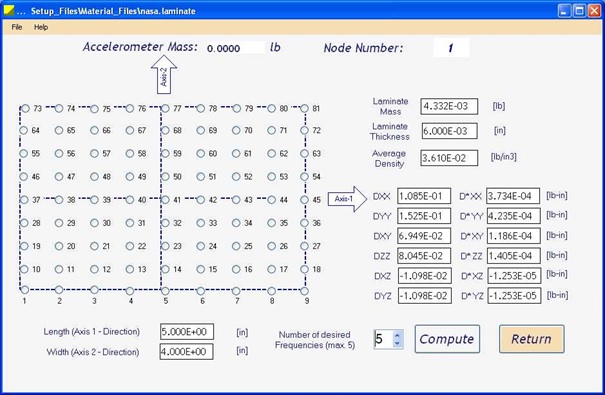
Up till 5 resonances can be computed using the finite element program imbedded in the Resonalyser software. The results are shown in the figure below.
